Transit of the International Space Station on 10/4 at 1/3 actual speed.
#solartransit #astronomy #astrophotography #seestar
MCL
@marcllaguno.bsky.social
Clear skies enthusiast
@marcllaguno.bsky.social
Clear skies enthusiast
Transit of the International Space Station on 10/4 at 1/3 actual speed.
#solartransit #astronomy #astrophotography #seestar
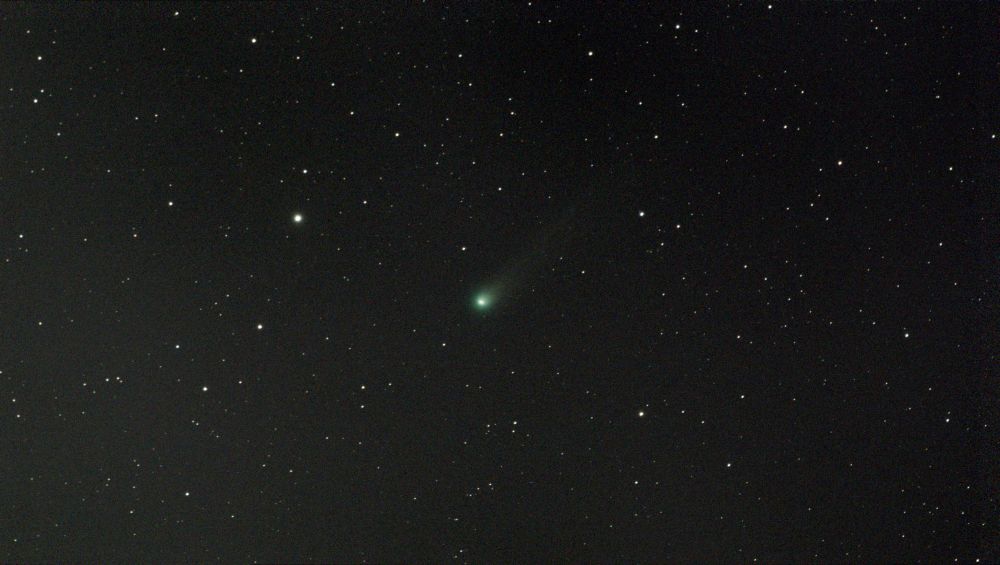
C/2025 A6 (Lemmon) imaged with a Dwarf 3 scope on Oct 2, 2025. The comet is in Leo Minor. The bright star to the upper left of the comet is 19 Leonis Minoris (19 LMi).
Comet C/2025 A6 Lemmon near Leo Minor . The green color is from the dicarbon (C2) species found in the coma.
#astronomy #astrophotography #dwarf3 #comet #cometlemmon

A hydrogen alpha image (656 nm) of the Sun taken with a Lunt 40 mm telescope.

Coloring of the H-alpha image to bring out the solar prominences
An H-alpha image of the #Sun on Aug. 30.
Left: result from raw images aligned and stacked.
Right: color rendering of the left image in Photoshop to bring out the prominences.
On the disk are spicules or “fur”, filaments and plage (white regions near sunspots).
#astronomy #astrophotography

Neptune and Saturn imaged with the #Dwarf3 telescope on August 12. Two of Saturn’s larger moons,Titan and Iapetus, were discernible.
#astronomy #astrophotography

A collage of images showing the asteroid 2 Pallas over 3 nights. It is currently in the constellation Delphinus and will be in opposition and at its brightest on Aug 10. Pallas is the 3rd largest asteroid in the solars system after 1 Ceres and 4 Vesta.
2 Pallas, the 3rd largest asteroid in the solar system, is now in the constellation Delphinus. It will be in opposition and at its brightest on 8/10. Currently, it is at magnitude 9.4. The brightest star in each image is Saulocin.
#astronomy #astrophotography #dwarf3 #asteroid #minorplanet

Seyfert’s Sextet is a group of galaxies near Serpens. One of them is almost a billion light-years away! The image is taken with a dwarf 3 telescope. The total integration time is 15.5 mins, using 30 second sub-exposures.

Enlarged and cropped image of the sextet with NGC 6027d encircled. It is almost magnitude 16 and nearly 1 billion light-years away!
Seyfert’s Sextet, found between Hercules and Serpens, consists of 5 galaxies and a long tail of stars of one of them. NGC 6027d is not gravitationally related and is actually 955 million LY away! The other 5 are only 190 million LY away. Such old photons!
#dwarf3 #astronomy #astrophotography

The Crab Nebula in Taurus. It is a remnant of a supernova explosion on July 4,1054. Imaged in Nov 2024.
The Crab Nebula (M1), the remnant of a supernova that exploded on July 4,1054. It is 6,500 light years away and found in the constellation Taurus.
#astronomy #astrophotography #seestar #fourthofjuly

Waxing crescent moon surrounded by Mars, Rho Leonis and 49 Leonis
The waxing crescent moon flanked by (clockwise from the top) Mars, Rho Leonis and 49 Leonis.
#astronomy #astrophotography #dwarf3
*HD 133880
27.06.2025 05:14 — 👍 0 🔁 0 💬 0 📌 0
V462 Lupi imaged 12 days after going nova. It is around magnitude 5.6 in brightness.
V462 Lupi, 12 days after it turned nova.
Imaged ~ 8 degrees above the southern horizon. The comparison star is HD 13380 (HR Lupi) below the nova, at the center of the image.
#nova #astronomy #astrophotography #dwarf3

Stack of 60 frames Exp : 1/250 s Gain : 60 Filter : VIS (430 - 650 nm) 6/5/25, 12:20 am EDT

Waxing gibbous moon
At the right angle of illumination, two features appear at the southern region of the moon:
Rupes Recta (“Straight Wall”) - a 110 km by 2 to km wide fault
The Eyes of Clavius - the rims of the 2 smaller craters w/in the Clavius crater
#astronomy #astrophotography #dwarf3

The Trifid Nebula (M20) and an open cluster (M21) to the northwest.
The Trifid Nebula (M20) and its open cluster neighbor (M21) near Sagittarius first observed by Charles Messier on June 5, 1764 — 261 years ago today.
Imaged with the Dwarf 3 with the duo band filter.
#astronomy #astrophotography #dwarf3


A Study of the Sky, Herbert A. Howe (1896)
26.05.2025 02:10 — 👍 1 🔁 0 💬 0 📌 0
Kemble’s Cascade (Kemble 1) imaged with a Dwarf 3 scope. It is a chain of stars going from the northeast to the southwest and ends at the open cluster NGC 1502.

Kemble 2 or Mini-Cassiopeia imaged with a Seestar S50 scope.
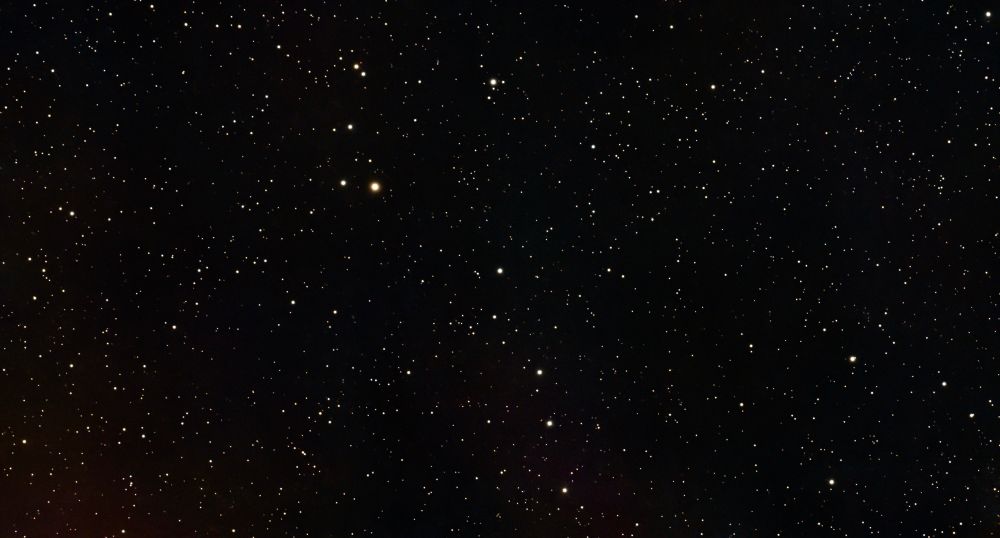
Kemble’s Kite imaged with the Dwarf 3 scope.

The 3 asterisms observed and reported by Fr. Lucian Kemble.
Asterisms named after Fr. Lucian Kemble:
Kemble 1: Kemble’s Cascade (in Camelopardalis)
Kemble 2: Little Queen or Mini- Cassiopeia (in Draco)
Kemble 3: Kemble’s Kite ( between Cassiopeia and Camelopardalis)
#astronomy #astrophotography #asterism #seestarS50 #dwarf3

Spotted Sun imaged with the S50 scope

Region 4079 with 34 spots

Zoomed in and image stacked region 4079. The “tiny” spots are visible here.
Beautiful spots today at regions 4079 (34 spots) on the left and 4076 (1 spot) on the right.
#sunspots #astronomy #astrophotography #seestar #solarastronomy

A waxing crescent Moon

The Beehive Cluster (M44) in the constellation Cancer next to Mars. Image taken with Dwarf 3 in Mosaic mode.

The Globular Cluster M9 at the center and a Dark Nebula Barnard 64 to the right. The molecular clouds are so dense that the patch of sky looks empty.
A night sky of wonder and beauty:
a New Moon, a War God hounded by Bees (Mars and the Beehive Cluster), a Thousands Suns next to a seeming Obsidian Void (M9 and Barnard 64)
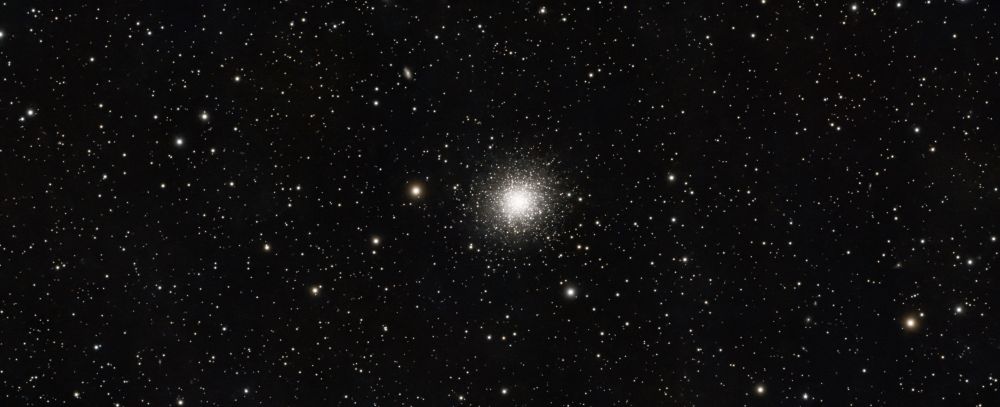
This is the globular cluster M13 taken with the Dwarf 3 scope. A total of 165 30sec exposures were taken and stacked.
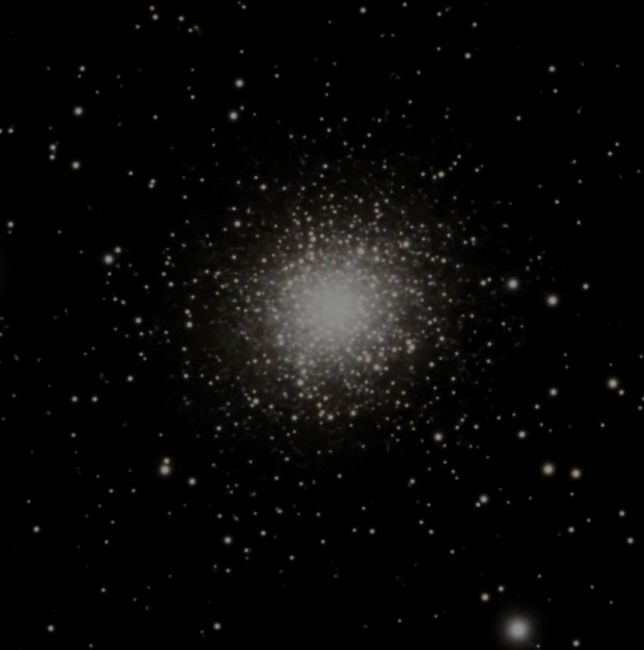
We zoom in on the cluster and decrease the exposure to bring out the “propeller” in the core.
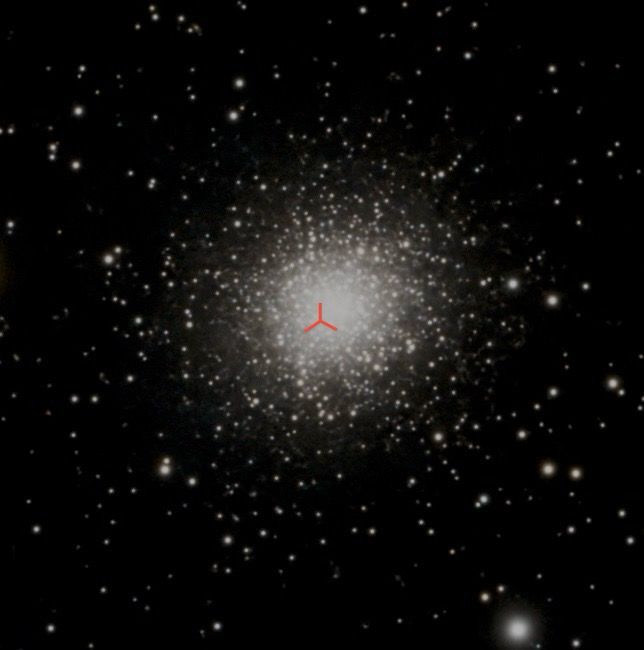
The propeller is indicated by the 3 red lines.
In the Great Hercules Cluster (M13), three relatively dark lanes nearly 120 degrees apart seemingly form a propeller. This was first reported by Bindon Stoney in 1850. Globular clusters may look the same but each has its own special traits.
#astronomy #astrophotography #dwarf3
I do the same. I search for the nearest known object, image in the same area and look for my target by comparing with an image with the target identified.
22.04.2025 23:24 — 👍 1 🔁 0 💬 0 📌 0
Happy #EarthDay, fellow space travellers!
22.04.2025 20:19 — 👍 1 🔁 0 💬 0 📌 0There are many star finding apps that can help you navigate around.
19.04.2025 18:58 — 👍 1 🔁 0 💬 1 📌 0
It is too busy up there!
#astronomy #astrophotography #startrails #polaris

Neighborhood of K2-18 in Leo. Taken with dwarf3, 133 x 15 secs

The home star of exoplanet K2-18b. The red dwarf K2-18 is 124 light years away.
This is the home star of exoplanet K2-18b. It is a red dwarf about 124 light years away in Leo. The bright star to the right is HD 99904 for reference.
#astronomy #astrophotography #reddwarf #dwarf3
@kat-astro-bot.bsky.social
From last night: here's 67 minutes worth of asteroid (8) Flora passing in front of galaxy NGC 3628. 🔭
11.04.2025 15:52 — 👍 92 🔁 12 💬 4 📌 0Thanks!
11.04.2025 01:33 — 👍 1 🔁 0 💬 0 📌 0
Kemble’s Cascade in Camelopardalis. 15 sec exposure.

Kemble’s Cascade in Camelopardalis, 4.5 mins of 15 sec subs
The #Dwarf3 sensor nicely fits Kemble’s Cascade (Kemble 1), an asterism of about 20 stars in the constellation Camelopardalis. It starts from the upper right and ends at the open cluster, NGC 1502 at the lower left. A single 15 sec shot vs a 4.5 min stack.
#astronomy #astrophotography #asterism

Total Solar Eclipse April 8,2024
The Sun was masked but it could not be silenced. April 8,2024.
Eclipse math: The difference between a 99% eclipse and a total solar eclipse is still 100%.
Go see one.
#solareclipse #eclipse #astronomy #astrophotography
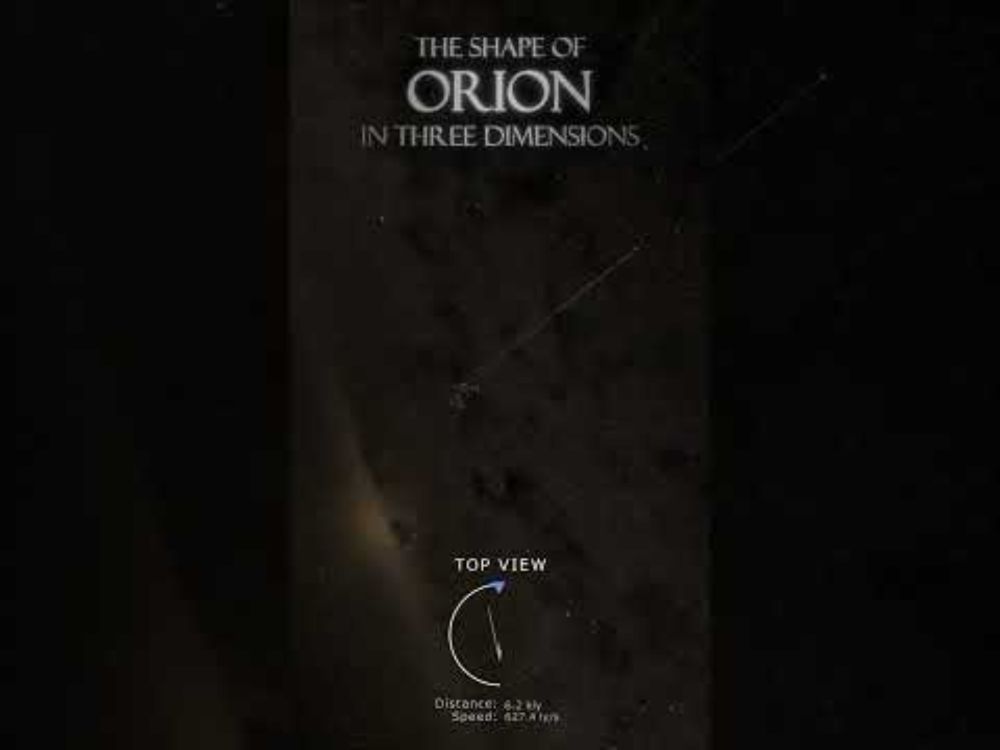
WATCH: This visualization reveals the stars of the Orion constellation in three dimensions. Watch as the familiar pattern on the sky distorts into a whole new perspective. 🔭 🧪
youtube.com/shorts/Gwo94...

T Coronae Borealis imaged on 4/2/25 with seestar S50. Epsilon CB is marked for reference.
Here is T Coronae Borealis imaged on 4/2/25 5am UTC. ε-Coronae Borealis is marked for reference.
#nova #astronomy #astrophotography

18% waxing crescent moon

18% waxing crescent moon
Waxing Crescent Luna
#astronomy #moon #astrophotography #seestar

Faint dwarf galaxy near Regulus in Leo. An asteroid trail (526 Jena) is seen next to the faint galaxy.

While imaging the faint dwarf galaxy just above Regulus in Leo last February, I noticed a trail develop nearby after about an hour of integration time. It was pointed out to me by @palomarskies.bsky.social that it was asteroid (526) Jena.
#astronomy #astrophotography #seestar #asteroids